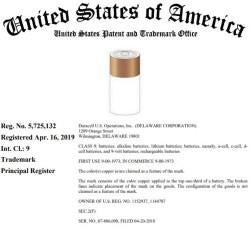
 One key Branding Law strategy involves stretching the boundaries of traditional trademark principles for registering important business assets. As a companion piece to our discussion of non-standard copyrights from a few months back, the following is a brief survey of some lesser-known types of trademarks that could be available for protecting certain brand attributes as well.
One key Branding Law strategy involves stretching the boundaries of traditional trademark principles for registering important business assets. As a companion piece to our discussion of non-standard copyrights from a few months back, the following is a brief survey of some lesser-known types of trademarks that could be available for protecting certain brand attributes as well.
Product Packaging
Some package designs may be considered inherently distinctive as trade dress and eligible for trademark registration if the factors set forth in Seabrook Foods, Inc. v. Bar- Well Foods, Ltd. have been satisfied with the packaging essentially being considered unique rather than a mere refinement. One iconic example and a major part of the Coca Cola brand is its iconic bottle design. Other examples include the Kleenex brand tissue box design.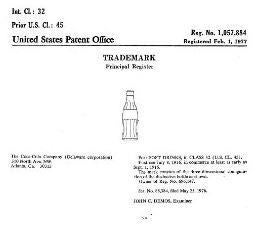 However, the trade dress in question must not be considered ‘overall functional’ under the Morton-Norwich factors. In other words, the packaging needs to serve as an identifier of source rather than having more utilitarian purposes, including any manufacturing cost or quality considerations. For instance, the Listerine mouthwash bottle was denied injunctive relief against a competitor’s similar design on grounds that the ‘waisted’ or ‘barbell’ shape was primarily intended for ease of handling rather than brand identity. Interestingly-enough, it was later approved for registration by the USPTO approximately ten years later.
However, the trade dress in question must not be considered ‘overall functional’ under the Morton-Norwich factors. In other words, the packaging needs to serve as an identifier of source rather than having more utilitarian purposes, including any manufacturing cost or quality considerations. For instance, the Listerine mouthwash bottle was denied injunctive relief against a competitor’s similar design on grounds that the ‘waisted’ or ‘barbell’ shape was primarily intended for ease of handling rather than brand identity. Interestingly-enough, it was later approved for registration by the USPTO approximately ten years later.
Product Configurations
Also falling under the general category of ‘trade dress’ protection, product configurations are the distinctive designs of the item itself, not to be confused with product packaging above. Examples include the conically-shaped candy sold as HERSHEY’S KISSES and certain NIKE brand athletic shoes.
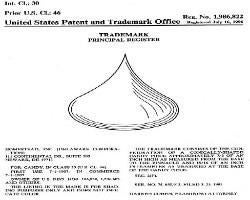 However, following the U.S. Supreme Court decision in Wal-mart Stores v. Samara Bros. there is a secondary meaning requirement, in addition to non-functionality, as these types of marks can no longer be deemed inherently distinctive. Instead, the applicant must prove acquired distinctiveness as even five years or more of substantial and continuous use is no longer dispositive. Consumer survey evidence and proof of significant advertising, substantial sales figures and such will be needed to overcome the obligatory USPTO refusal.
However, following the U.S. Supreme Court decision in Wal-mart Stores v. Samara Bros. there is a secondary meaning requirement, in addition to non-functionality, as these types of marks can no longer be deemed inherently distinctive. Instead, the applicant must prove acquired distinctiveness as even five years or more of substantial and continuous use is no longer dispositive. Consumer survey evidence and proof of significant advertising, substantial sales figures and such will be needed to overcome the obligatory USPTO refusal.
Building Designs
Yes, certain building designs can be registered as trademarks. Where would McDonald’s be without its distinctive restaurant architecture or even the unique Apple Store look and feel that reinforces the tech giant’s brand persona of simplicity so effectively?
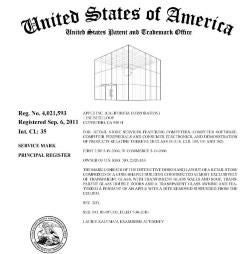 However, as demonstrated in yet another Supreme Court case, Two Pesos v. Taco Cabana, Inc, restaurant interiors are also protectable for their distinguishable branding aspects under trademark law and are considered related to product packaging rather than product configurations; hence, once the non-functionality threshold has been satisfied, a showing of secondary meaning will not be needed if the design itself is considered inherently distinctive.
However, as demonstrated in yet another Supreme Court case, Two Pesos v. Taco Cabana, Inc, restaurant interiors are also protectable for their distinguishable branding aspects under trademark law and are considered related to product packaging rather than product configurations; hence, once the non-functionality threshold has been satisfied, a showing of secondary meaning will not be needed if the design itself is considered inherently distinctive.
Distinctive Colors
Protection of colors is a bit unsettled as we’ve seen pink fiberglass insulation approved for registration thanks to over fifty million dollars in advertising expenditures featuring none other than the Pink Panther cartoon character himself. Attempts to do the same for Mattel’s icon Barbie doll are nothing more than an Internet myth, however.
Meanwhile, ‘Tiffany blue’ boxes used in connection with the sale of various gift items has been recognized by the USPTO. Other examples include magenta for cellular phone services, green and yellow for John Deere-brand tractors and women’s shoes featuring a red lacquered sole, just to name a few.
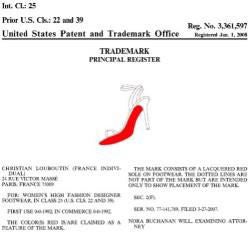 However, yellow for Cheerios-brand cereal boxes and blue for packets of table sugar were denied protection on the basis of common use ‘color depletion’. Secondary meaning is a pre-requisite to approval in such cases, particularly after the landmark Supreme Court decision in Qualitex Co. v. Jacobson Products Co., Inc., and as we’ve repeatedly seen above, utilitarian function is an absolute bar to registration.
However, yellow for Cheerios-brand cereal boxes and blue for packets of table sugar were denied protection on the basis of common use ‘color depletion’. Secondary meaning is a pre-requisite to approval in such cases, particularly after the landmark Supreme Court decision in Qualitex Co. v. Jacobson Products Co., Inc., and as we’ve repeatedly seen above, utilitarian function is an absolute bar to registration.
Sensory Experience
Central to an effective branding strategy are various consumer touchpoints, including distinctive sounds and smells, as these are often even more memorable than any of the visual elements discussed above. As such, the MGM lion’s roar, click of the Zippo brand cigarette lighter, and the Apple computer start-up chimes have all been successfully registered as auditory trademarks.
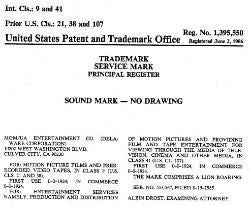 Even tactile trademarks have been registered, such as leather texture wrapping for both wine bottles and Louis Vuitton bags. Consumer ‘touchpoints’ indeed! While olfactory trademarks, such as the scent of PLAY-DOH brand modeling clay and the Verizon store ‘musk floral’ scent have been approved by the USPTO, although the latter registration has recently been cancelled, perfume fragrances are routinely denied on the basis of utilitarian function.
Even tactile trademarks have been registered, such as leather texture wrapping for both wine bottles and Louis Vuitton bags. Consumer ‘touchpoints’ indeed! While olfactory trademarks, such as the scent of PLAY-DOH brand modeling clay and the Verizon store ‘musk floral’ scent have been approved by the USPTO, although the latter registration has recently been cancelled, perfume fragrances are routinely denied on the basis of utilitarian function.
Similarly, gustatory trademarks, such as orange-flavored medication have been refused registration due to its ability to mask other unpleasant flavors. By granting exclusive rights in the same, the Trademark Office would be stifling competition and hindering public interest.
Motion Branding
Finally, protection for a series of movements has been a relatively newer attempt to stretch the boundaries of trademark law. When submitting the trademark application, it is necessary to provide both a written description of the sequence in question along with either illustrative screenshots or a video clip.
As with sensory marks above, functionality and secondary meaning are both key considerations with successful registrations being granted to the unique way in which Lamborghini automobile doors are opened, the Microsoft Windows start up screen displays, and even for the famous marching ducks from the Peabody Hotel in Memphis. Other examples include Columbia Pictures title animation and the three-dimensional water spray from Yamaha-brand watercraft.
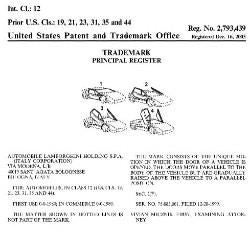 When considering any of the above, always be mindful of any relevant secondary
When considering any of the above, always be mindful of any relevant secondary
meaning considerations. Depending on the types of assets being protected, those requirements can vary widely. Also, ‘look at’ advertising, such as Duracell’s repeated mention of its “copper top battery” is often vital for establishing acquired distinctiveness. Conversely, marketers need to avoid including statements which point out utilitarian features or resulting benefits as those could undercut a showing of secondary meaning. When handled correctly though, these non-standard trademarks can provide an often- overlooked variety of options for brand managers and Branding Law practitioners alike.
2686 Views

